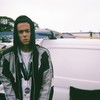Screen shot via the VICE documentary Locked Off
The Metropolitan Police recorded nearly twice as many planned unlicensed music events in 2017 as they did in 2016, with a Freedom of Information request by the Sunday Telegraph revealing that in the space of a year the number of planned illegal raves rose from 70 to 133.Many are already drawing the obvious links between the soaring number of illegal raves and the dwindling number of nightclubs in the capital; the UK has lost almost half of its clubs in the past decade, it was revealed in 2015. It’s a statistic that’s often repeated, but for good reason, as nightlife options in London and beyond have become increasingly homogenised where they haven’t disappeared completely.The Telegraph report features input from CAMRA, who reckon that drinking in pubs has become an "unaffordable luxury" thanks to the price of pints in London. Mark Davyd, founder and CEO of the Music Venue Trust, is also quoted arguing that the high cost of maintaining a license and paying business rates can be responsible for pushing nightlife underground and driving up the number of unlicensed events. Business rates in London have risen by an average of 26 percent since April of 2017, according to research company Nordicity.That said, we should be wary of falling too easily for the neat story these statistics seem to be telling us. It's a sweep to assume that the ravers who take rigs to abandoned docking yards are the same people who were queueing up for Sankeys or Dance Tunnel. The free party scene is a culture of its own, and it would take more than a £6.50 pint of IPA to drive most people to a jungletek party in the sticks, or a drum 'n' bass rave in an abandoned office block. The closure of nightclubs is more likely to drive up Netflix subscriptions than it is illegal raves.If we want to understand why the numbers have soared, we’d be better off looking for less obvious deterministic reasons. Consider the free parties of the late-1980s and early-1990s: that cultural explosion didn’t happen because people couldn’t think of anything better to do.The rise of parties that seek to escape the restrictions of mainstream ticketed events have as much to do with actively resisting the status quo – cultural or otherwise – as they do simply getting on it. Despite how the police treat them, raves are events, not acts of vandalism. It takes a great deal more impetus than boredom to put one on, or even to seek one out. Raves come from discontent long before they come from disinterest.To say they have risen in number simply because nightclubs have closed relies on the assumption that they are a last resort. Maybe they’re not. Maybe they are rising from somewhere new entirely.@a_n_g_u_s
Advertisement
